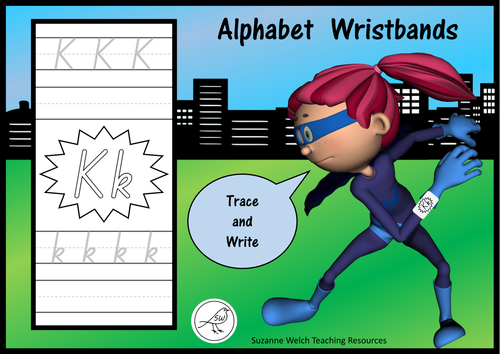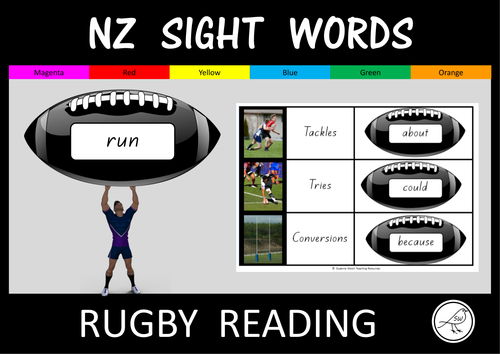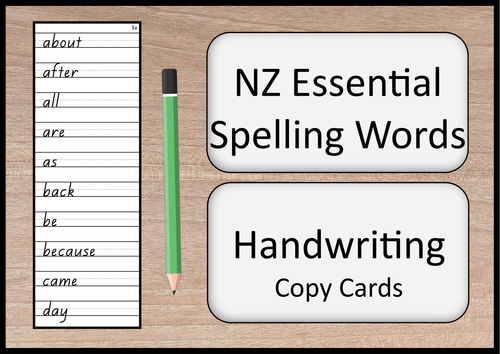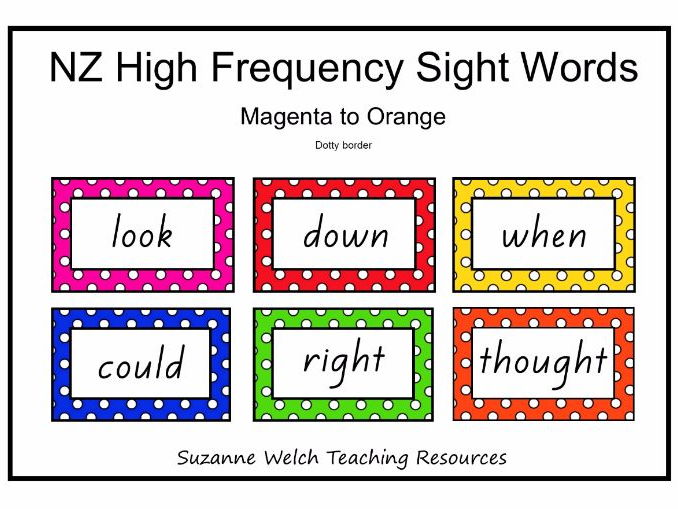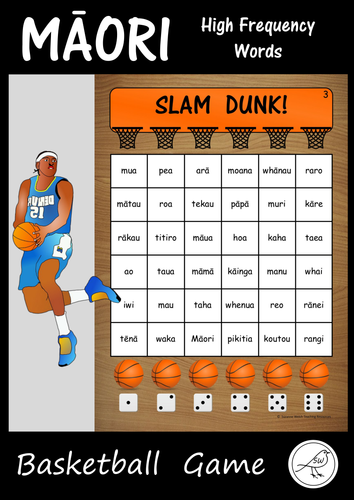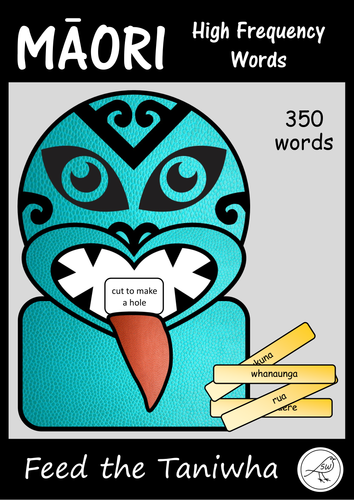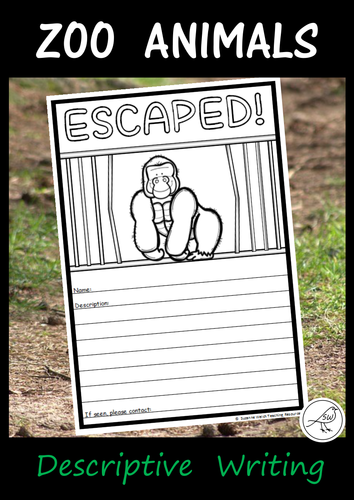
377Uploads
150k+Views
9k+Downloads
Literacy for early years

Honeybees – Collaborative Honeycomb Template – Research and Write Facts
A fun activity when learning about honeybees.
1. Research information about honeybees.
2. Write a fact in each of the 6 honeycomb cells.
3. Add colour.
4. Cut.
5. Display together on the wall to make a collaborative honeycomb.
Two Templates Included:
♦ Honeybee facing right.
♦ Honeybee facing left.
Provided in 2 different paper sizes:
♦ A4 paper size
♦ Letter paper size
**********************************************************************
© Suzanne Welch Teaching Resources

Alphabet Wristbands
Make an alphabet wristband and wear it like a superhero! What impressive super power will you display?
1. Trace the letters. Then write the letters by yourself.
2. Decorate the ‘letter explosion’ in the centre.
3. Cut around the outside.
4. Wrap it around the wrist and attach it with a little tape.
Of course, you don't have to make the wristband. You could use these templates in any way you wish.
Included:
26 pages of wristband templates (A-Z)
Features:
♦ Both capital and lower case letter formation.
♦ Pale grey font used for the letters that are traced over.
♦ Dashed centre line in a pale grey font to help with letter size.
♦ The templates have 3 capital letters and 4 lower case letters (except for ‘m’ and ‘w’ which have 2 capital letters and 3 lower case letters, due to their width).
♦ Simple shape to cut around.
♦ 3 templates to each A4 size page.
♦ Dimensions are approximately 185mm x 85mm.
The font used is ‘NZ Basic Script’. The letter shapes are the same as those recommended in the NZ Ministry of Education Handbook – ‘Teaching Handwriting’.
A ‘super’ fun activity for ‘super’ kids (and teachers). Let’s face it, we all like to be a superhero once in a while ….
**********************************************************************
© Suzanne Welch Teaching Resources

Spelling Homework - Weekly lists - Word families and high frequency
Is spelling homework driving you crazy? Is the preparation of it eating up all of your precious time? Then here is the answer for you ….
39 weeks of spelling lists to cover your teaching year.
Word families and high frequency words.
Two levels – A and B.
EDITABLE FORMAT
This resource is provided in two formats:
* An editable WORD document – adjust it to suit you! Add dates, change spelling to suit your part of the world, etc.
* A PDF document – print it out as it is and write dates on before photocopying and giving to your students.
39 WORD FAMILIES
an, at, it, et, ig, in, all, ing, ot, op, un, ay, ook, est, ell, ame, ake, ide, ip, ock, uck, ump, unk, ap, ail, ain, ick, ill, ash, ink, ate, ug, eat, ice, ank, ine, oke, ope, ack.
EXAMPLE – word family ‘OP’:
Level A
Word family – top, pop, shop, chop, drop, stop
High frequency – but, was
Level B
Word family – all of level A words, plus: topple, develop, floppiest, galloping, lopsided, scallop.
High frequency - when, what, who, where, why
UK OR USA SPELLING?
The lists are made using UK spelling but the WORD document is editable so if there are any words that need altering, it’s easy peasy!
What do I do?
Simply send the 10 week list home with the student at the beginning of the term. Ask them to keep it somewhere safe. The student refers to this list each week to learn the words. Test the students on this list at the end of each week.
No more …
* lists with spelling mistakes.
* lists with untidy printing.
* excuses about lists left at home/school.
* random lists full of words without a spelling focus.
* sitting up till midnight or using your weekends to prepare spelling lists.
© Suzanne Welch Teaching Resources

Māori Myths and Legends - How the Kiwi Lost its Wings
This is a fun activity for your students that you can use after reading the story: How the Kiwi Lost its Wings.
This activity is suitable for any retelling of the story.
Colour the kiwi, write/draw in the body templates and staple them together. Lift the flap to view.
Activities:
♦ Give the story a rating out of 5 (colour the stars) and give a reason.
♦ This story is about … (write on the lines).
♦ Facts about kiwis (write on the lines).
♦ Cinquain Poem (write on the lines, example included).
♦ Acrostic Poem (KIWI)
♦ Blank body template – make up your own activity.
You can use as many of the activities as you wish (this will determine the number of ‘flaps’). The only activity that is not optional is the story rating because that is on the kiwi’s body.
Two Options:
♦ Kiwi – cut the bird out and staple the flaps to it.
♦ Kiwi on page with border, tree branches and the story title. The kiwi is not cut out. Staple the flaps to it.
Alternative - Plain Kiwi Template:
This kiwi template is also available without the activities for the story (available for purchase in my store: 'New Zealand Kiwi Craft - Flip Flap')
**********************************************************************
© Suzanne Welch Teaching Resources

New Zealand Sight Words - Rugby
A fun activity for practising sight words from magenta to orange. This activity will engage many of your students (particularly your boys).
The Activity:
Place the rugby balls face down (in a pile or scattered). Each student has a ‘Rugby Score Sheet’ in front of them. Students take turns at picking up a rugby ball and reading the word. They place the ball on their ‘Rugby Score Sheet’ accordingly:
♦ TACKLE – they have a go at reading the word but they are unsuccessful / require help.
♦ TRY – they read the word correctly.
♦ CONVERSION – after reading the word correctly, they can say the word in a sentence. This is great for oral language development. If they are unsuccessful at saying the word in a sentence then they leave the ball in the ‘Try’ section.
Count up the number of balls in each category at the end. You could allocate points for each category if you wish. You can also play this activity in ‘teams’ and have them challenge each other.
Included:
♦ Rugby balls for words from Magenta to Orange
♦ Blank template (for additional words if necessary)
♦ Rugby Score Sheet
♦ Word list
♦ Teacher notes
There are 6 rugby balls on each A4 size sheet.
Words are written with the NZ Basic Script font.
Words align to the NZ reading colour wheel.
An alternative activity is to print 2 sets of rugby balls and play ‘memory’. Place the cards face down. Students take turns at turning 2 cards over. If the words are the same, they keep the cards and have another turn. Who has the most pairs of cards at the end?
© Suzanne Welch Teaching

New Zealand Essential Spelling Words - Handwriting Copy Cards
Handwriting copy cards for the NZ essential spelling lists 1-8.
♦ 10 words per card.
♦ 4 cards per A4 page.
♦ 35 cards (plus one bonus card)
The font used is ‘NZ Basic Script’. The letter/number shapes are the same as those recommended in the NZ Ministry of Education Handbook – ‘Teaching Handwriting’.
Lists are 1-7 and list 8 is the ‘Commonly Misspelt Words’.
Each handwriting card has the list number in the top right corner.
A grey dashed line is used to indicate the half-way mark.
The 'bonus card' is the days of the week and the words 'yesterday, today, tomorrow'.
**********************************************************************
© Suzanne Welch Teaching Resources

New Zealand High Frequency Sight Words
New Zealand High Frequency Sight Words.
Display them on the wall, put them on a ring clip, use them in a literacy activity ….
2 options available in this resource – dotty border or scribble border. Print and use the one you prefer!
Blank templates included – write additional words or use your own word lists.
4 word cards to each A4 size paper.
The font used is ‘NZ Basic Script’. The letter shapes are the same as those recommended in the NZ Ministry of Education Handbook – ‘Teaching Handwriting’.
Word lists included (each list on A4 size paper)
High frequency words align to the NZ reading colour wheel:
♦ magenta (25 words)
♦ red (28 words)
♦ yellow (31 words)
♦ blue (37 words)
♦ green (49 words)
♦ orange (63 words)
© Suzanne Welch Teaching Resources

Label the Zoo Animals
A set of 26 zoo animals to label. Perfect for an animal study or as an activity pre/post a field trip to the zoo.
Options:
♦ Cut and glue the labels into the correct boxes.
♦ Use the word bank to write the words into the correct boxes.
The 26 Animals:
Bear
Crocodile
Cheetah
Elephant
Flamingo
Frog
Giraffe
Gorilla
Hippopotamus
Kangaroo
Koala
Lion
Lizard
Monkey
Panda
Parrot
Peacock
Penguin
Polar Bear
Rhinoceros
Sloth
Tiger
Toucan
Tortoise
Walrus
Zebra
There are 5 labels on each picture.
All pages are ‘landscape’ orientation and designed on A4 size paper.
**********************************************************************
© Suzanne Welch Teaching Resources

Anzac Day, Armistice Day, Remembrance Day - Haiku Poem on a Poppy Bookmark
A poetry writing activity for your students that can be used for war remembrance days such as:
♦ Anzac Day
♦ Remembrance Day
♦ Armistice Day
♦ Memorial Day
♦ Veterans Day
This poem has the format of 5 syllables, 7 syllables, 5 syllables.
Write the poem then add colour, cut, fold in half and glue together. Laminate if desired.
Included:
♦ 2 x poppy bookmark templates – with and without lines for writing
♦ 1 x soldier silhouette bookmark template – with and without lines for writing
♦ Poem Framework
♦ Example poem
2 paper sizes:
♦ A4 size paper
♦ Letter size paper
Approximate size: 19cm x 7 cm (once folded)
**********************************************************************
© Suzanne Welch Teaching Resources

Matariki - Reading comprehension activity and paper lantern craft
Celebrate the Māori New Year with this literacy and craft resource. Read the article in the NZ School Journal, complete the follow-up comprehension activity and then make a paper lantern.
The School Journal article is not provided in this resource.
You will need access to: New Zealand School Journal – Part 1 – Number 3 – 2005
The article is about 2 children who find old kamokamo shells under their Gran’s hedge. They plant the seeds and wait for the new kamokamo to grown. They make lanterns out of the dried shells during Matariki.
Reading Comprehension Activity:
After reading the article in the school journal, students make a kamokamo flip book to show the order that events happened in the article. There are a total of 14 events plus a title page and a back page to colour. The kamokamo are on two A4 pages. There are 2 sets of activity sheets – one set has clues in the stalk of the picture to indicate ‘beginning, middle or end’ (B, M, E). This set is suitable for your students that require some extra support to complete the task. Answers are provided.
Paper Lantern Activity:
There are various templates that you can choose from to print and use. Please click on the ‘Look Inside’ button above to see examples of all templates. Some are for colouring only, and others require your students to add further decoration/patterns. A ‘handle’ template is also included however you may just wish to use scrap paper for this. Instructions are provided.
**********************************************************************
© Suzanne Welch Teaching Resources

Anzac Day, Armistice Day, Remembrance Day - Cinquain Poetry Writing
A poetry writing activity for your students that can be used for war remembrance days such as:
♦ Anzac Day
♦ Remembrance Day
♦ Armistice Day
♦ Memorial Day
♦ Veterans Day
This poem has a noun, 2 adjectives, 3 verbs, a 4 word phrase and a synonym.
Write the poem and then colour the poppy and border. They look great cut out and displayed on the classroom wall.
There are 5 different styles of poppies.
Included:
♦ 5x publishing templates - with lines for writing
♦ 5x publishing templates – no lines
♦ Poem Framework
♦ Example poem
2 paper sizes:
♦ A4 size paper
♦ Letter size paper
Approximate size: 18cm x 22cm.
**********************************************************************
© Suzanne Welch Teaching Resources

New Zealand Essential Spelling Lists - cards
New Zealand Essential Spelling Lists 1-8.
5 words on each card.
Can be used in a multitude of ways in your classroom.
Suggestions for use:
♦ Spelling activities (eg alphabetical order, words in sentences).
♦ Word study (eg how many syllables, how many vowels).
♦ Handwriting (The font on the cards is ‘NZ basic script’).
♦ Writing – make up a sentence/story using the words.
♦ Oral language – make up a story with a buddy. Use words and picture.
♦ Maths (eg if a=$1, b=$2, c=$3 etc, what is the most expensive word on the card?).
♦ Reading – read the words to a buddy
Different colour border for each list. List number (eg ‘List 6e) written at top of card.
List 8 is commonly misspelt words.
4 cards on each A4 page. 18 pages of cards.
© Suzanne Welch Teaching Resources

Sentence Work – capital letters, full stops and question marks.
Activity sheets for learning about capital letters, full stops and question marks. The sentences contain high frequency sight words so they are suitable for junior students (early readers).
Activities:
♦ READ the text.
♦ EDIT the text (capital letters, full stops, question marks).
♦ WRITE the edited text on the lines.
♦ DRAW a picture in the empty box.
Four Levels:
♦ 1 sentence
♦ 1 sentence (questions)
♦ 2 sentences
♦ 2 sentences (with questions)
Two Formats:
♦ A4 size paper (with NZ/AU/UK spelling)
♦ Letter size paper (with US spelling - mom)
Each level contains 5 different activity sheets. This resource contains a total of 20 worksheets. Each set of worksheets has a different ‘bee’ picture.
What needs editing?
♦ Punctuation - full stops and question marks.
♦ Capital Letters – beginning of sentences, I, proper nouns.
The font used is ‘NZ Basic Script’. The letter shapes are the same as those recommended in the NZ Ministry of Education Handbook – ‘Teaching Handwriting’. The lines are 14mm high with a 7mm dashed line.
A helpful resource for literacy stations, focused writing lessons or homework.
THE SENTENCES:
Level A – 1 sentence
Look at the little bird in the big tree.
Mum and Dad looked for my reading book.
I like to play on the slide when I go to the park.
I have a black cat and his name is Fluffy.
We are going to China with Grandma on Monday.
Level B – 1 sentence (question)
What would you like to eat for dinner?
Could you please help me look for my red ball?
When can I take the little puppy for a walk?
Would you like to play with Sam after school?
Where is my book about Mickey Mouse?
Level C – 2 sentences
Look at the pink pig. It is so happy in the mud.
I like Mr Brown’s car. It is long and black.
Dan put the book in his bag. He took it to school.
I saw Amanda run away. She is over there.
I can’t find Mum. I think I am lost.
Level D – 2 sentences (with questions)
Where is my bat? Will you help me look for it?
We like to skip and jump. Can I jump higher than Kim?
Was that a little mouse? I think it ran under the bed.
I saw Tom on the bus. Where is he going?
How fast can you ride your bike? I can go faster than Dad.
**********************************************************************
© Suzanne Welch Teaching Resources

Māori High Frequency Words - BINGO
This resource contains 4 different BINGO games that are made with the first 200 high frequency Māori words. Each game contains 50 words.
The Games:
♦ Game 1 - words 1-50
♦ Game 2 - words 51-100
♦ Game 3 - words 101-150
♦ Game 4 - words 151-200
Each Game Includes:
♦ word cards (print and cut)
♦ 15 x coloured BINGO mats
♦ 15 x black/white BINGO mats
The coloured mats have a woven texture border. . The borders are the same as those used on my WORD CARDS. A black/white set of BINGO mats are also provided. If desired, your students could decorate the borders on these mats to personalise them.
♦ 3 BINGO mats on each A4 size page
♦ 12 words on each BINGO mat
This resource has been created to support Māori medium education in Aotearoa. A helpful resource for full immersion and bilingual classes.
Examples of words used: haere, tētahi, korero, ki, rawa, au, reira, reo, taea, whare, whakaaro, tekau, moana, tāngata, rongo, ingoa, hiahia, kitea, karanga, tuna, tangi, ehara, huarahi, pou.
For a full list of the words used in this resource please go to the tki website listed above. They are the first 200 words in frequency order (te to āhuatanga)
**********************************************************************
© Suzanne Welch Teaching Resources

Māori High Frequency Words – Basketball Game
‘Slam Dunk’ is a super-fun basketball themed game that will help your students practise reading high frequency Māori words.
There are 10 different game boards that contain the first 360 words of a list on TKI called ‘1000 frequency words of Māori – in frequency order’.
Included:
♦ 10 x coloured game boards
♦ 10 x black/white game boards
♦ Instructions
The words are written in frequency order and the games are numbered 1-10 in the top right corner.
How to Play:
Equipment Needed: one dice, 6 counters and one game board per player.
Players take alternate turns.
1. Place one counter on each of the 6 basketballs.
2. Roll the dice.
3. Find that number underneath the basketball and move that counter to the first word. Read the word out loud before placing your counter on top of it. The other player(s) checks you have read it correctly.
4. Continue in this way, moving a counter up one more space each time.
♦ Who is the first person to score a slam dunk? (when a counter reaches the basketball net at the top of the gameboard).
♦ Who is the first person to score all 6 slam dunks?
This resource has been created to support Māori medium education in Aotearoa. A helpful resource for full immersion and bilingual classes.
**********************************************************************
© Suzanne Welch Teaching Resources

Māori High Frequency Words – Fishing Activity
A great hands-on activity to reinforce the reading of 350 Māori high frequency words.
Make a fishing pole using a stick, string and magnet. Attach a paper clip (or split pin) to the fish and voilá! It’s time to go fishing.
These fish could also be used as a classroom ‘word wall’ display or used for activities in a literacy centre.
6 fish per A4 page
3 fish swimming left / 3 fish swimming right
Blank fish are also provided so you can add extra words if necessary.
The 350 words have been divided into 7 groups of 50 words. Each group is a different colour (pink, red, yellow, blue, green, orange, turquoise).
The font used is ‘NZ Basic Script’. The letter shapes are the same as those recommended in the NZ Ministry of Education Handbook – ‘Teaching Handwriting’.
This resource has been created to support Māori medium education in Aotearoa. A helpful resource for full immersion and bilingual classes.
Examples of words used: ngā, tētahi, mahi, reira, waka, whenua, pikitia, rua, tuatahi, rongo, karanga, āwhina, waho, kau, hua, tamaiti, ngahere, ako, paku, māna, whakahaere.
For a full list of the words used in this resource please go to the tki website listed above. They are the first 350 words in frequency order (te to oho)
**********************************************************************
© Suzanne Welch Teaching Resources

New Zealand High Frequency Sight Words - 'Clip and Flip' Word Frames
A full set of ‘clip and flip’ cards from magenta to orange!
Sight words are written in code (word frames) – can your students work out the correct word?
A word frame and 3 words are displayed on a funky i-pad. The colour of the i-pad is the same as the level on the colour wheel (eg ‘Red’ words have a red i-pad). Your students study the 3 words and decide which word fits the frame. They pin a clothes peg under the word they select then flip the card over to see if they are correct.
Please note that the cards do not come with the answers already on the back. You will need to indicate the answer prior to laminating the cards. This is achieved by simply placing a pencil tick in the correct location behind the coloured border. Instructions are included in the resource.
A great hands-on, critical thinking literacy activity for your students.
* Use these cards in a literacy centre, in a ‘word of the day’ discussion, as a writing activity (write the word in the word frame then wipe off) etc ….
* 2 i-pads on each A4 size paper.
* Word lists included for each set of words.
High frequency words align to the NZ reading colour wheel:
♦ magenta (25 words)
♦ red (28 words)
♦ yellow (31 words)
♦ blue (37 words)
♦ green (49 words)
♦ orange (63 words)
© Suzanne Welch Teaching Resources

Māori High Frequency Words – Feed the Taniwha
A super-fun, hands-on activity for students learning to read the first 350 high frequency Māori words.
Read the word on the kūmara chip and feed it through the hole in the mouth of the taniwha.
Included:
♦ 350 kūmara chips - coloured
♦ 350 kūmara chips – black/white
♦ Chip templates (add extra words if necessary) – coloured & black/white.
♦ Taniwha – black/white for your students to decorate and personalise.
♦ Taniwha – 4 different coloured options
♦ Teacher notes
Please click on the ‘Look inside’ button above to see examples.
Activity Suggestions:
♦ Place the kūmara chips into a container. Students draw one out and read the word aloud. If they read it correctly, they feed it through the mouth of the taniwha. If not, they put the chip back into the container.
♦ Place the kūmara chips on the table/floor. The teacher says ‘find the word _____ and feed it to your taniwha’. This could be a race between a small group of students, or they could each have a word to find and feed.
Preparation:
♦ Laminate the taniwha. Cut a hole in the mouth where indicated (to feed the chips through). It is suggested that you attach the laminated taniwha to a 2-litre ice-cream container so that it stands up. This will also give the chips something to fall into.
♦ Print the chips with the words that you would like to use. Laminate and cut. Place into a container (or something like a chip carton from a fast food outlet).
Designed on A4 size paper.
14 kūmara chips on each page.
**********************************************************************
© Suzanne Welch Teaching Resources

New Zealand Essential Spelling Words - 'Unscramble it' mats
A fun, interactive activity for your students to practise their spelling words.
Print and laminate the mats. Students use alphabet letters such as magnetic letters, scrabble tiles, letters written on milk bottle lids or pieces of card. They gather the letters they need and manipulate them until they see the word.
Words used: NZ Essential Spelling Words lists 1-8 (list 8 = commonly misspelt words).
2 Different Formats:
♦ With a prompt – a dot under the starting letter
♦ Without a prompt
69 ‘Unscramble it’ mats in total
Just print the mats that suit the level of your students:
♦ List 1 – 2 mats
♦ List 2 – 4 mats
♦ List 3 – 6 mats
♦ List 4 – 10 mats
♦ List 5 – 10 mats
♦ List 6 - 14 mats
♦ List 7 – 12 mats
♦ List 8 – 11 mats
* This is the type of activity that your ‘hands-on learners’ will appreciate.
* Great for a learning station, early finisher activity, etc.
* This activity will reinforce both spelling and reading.
The font used is ‘NZ Basic Script’. The letter shapes are the same as those recommended in the NZ Ministry of Education Handbook – ‘Teaching Handwriting’.
5 words on each A4 page.
The level of each mat is written in the bottom right corner.
Answer sheets are not provided. If you can’t work out what the word is (particularly some of the longer words in list 7 and 8) just look at the starting letter and refer to a copy of the essential spelling list.
Please note that when making some of the longer words, the letter tiles will not fit in the allocated space on the page. These longer words will spread out onto the table/floor. Also, there are two words in List one that are only 1 letter long (a and I) so these will not require unscrambling.
The words are displayed in a different order to my other resource – Essential Spelling Words ‘Make it’ mats.
© Suzanne Welch Teaching Resources

Zoo Animals – Escaped Posters
A fantastic activity for descriptive writing.
Included:
♦ 27 x Templates with words (Name, Description, If seen please contact)
♦ 27 x Templates without words (9 lines to write on)
♦ 2 x Templates without pictures of animals (draw your own). With/without words.
The 27 Animals:
Bear
Cheetah
Crocodile
Elephant
Flamingo
Frog
Giraffe
Gorilla
Hippopotamus
Kangaroo
Koala
Lion
Lizard
Monkey
Panda
Parrot
Peacock
Penguin
Polar Bear
Rhinoceros
Sloth
Snake
Tiger
Toucan
Tortoise
Walrus
Zebra
**********************************************************************
© Suzanne Welch Teaching Resources


